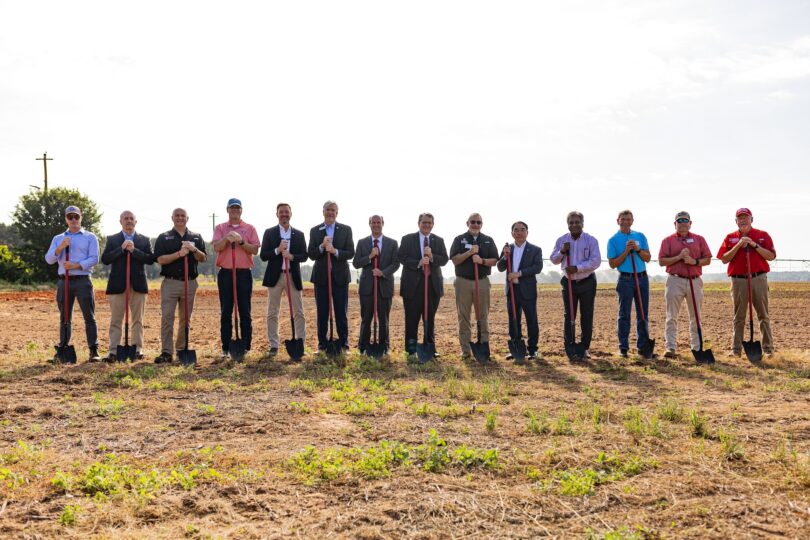By Brad Haire
University of Georgia
Once GSB hits a field, it can be hard to contain, especially in hot, wet weather, said David Langston, a plant pathologist with the UGA College of Agricultural and Environmental Sciences in Tifton, Ga. It attacks leaves and stems, severely reducing yields and sometimes killing plants.
Farmers typically spray plants with fungicides eight times during the growing season, or once a week from April through June, to try and stay ahead of the disease. The cost averages $25 per acre per application.
Georgia is a top watermelon-producing state. Georgia farmers are expected to grow between 25,000 acres and 30,000 acres this season, the most in recent years.
Langston and fellow CAES plant pathologist Kate Stevenson are leading a team of experts from North Carolina State, Clemson University and the University of Florida to figure out how GSB epidemics start each year. A two-year, $250,000 grant from the U.S. Department of Agriculture Cooperative State Research, Education and Extension will pay for the work.
“In many ways, and I’ve used this analogy often, we are trying to find the smoking gun, so to speak, for this disease in the Southeast,” Langston said. “If you don’t know where the inoculum is coming from, it is near impossible to control a disease.”
There are many fungicidal tools U.S. farmers use to fight GSB, but the disease is very good at becoming resistant to them quickly, Langston said -- as fast as in just a few years of the first use. This is a big problem.
To grow watermelons, U.S. farmers typically plant transplants, or baby plants, that are grown from seeds in greenhouses during the winter. These seedings are planted in Georgia fields in March and April. The seeds come from plants grown in Asia, South American and Australia. These countries have GSB, too. Farmers in these places use fungicides to control the disease, but which fungicides they use and how often is not known by U.S. watermelon experts or farmers.
Langston believes that GSB strains are becoming resistant to certain fungicides in foreign fields. The disease -- and the epidemics that hit Georgia and other states -– could be tracked to the seeds used to grow the watermelon transplants. Some of these transplants are resistant to fungicides before ever being sprayed in the U.S. Or, it could be spread each year through a build up of spores flying in the wind.
The research will determine if greenhouse plants in the U.S. are being infected by GSB spores either already in the house or flying in from the outside. To help do this, solar-powered machines will collect air samples in and around the houses.
If positive GSB spores are collected around the greenhouse before the plants inside show disease symptoms, the evidence would indicate the plants got it from the airborne spores and not from seeds. If GSB is seen on plants before spores arrive in the area, the evidence would show the disease didn’t start from airborne spores; it came from the seeds. The GSB spores collected from infected plants and the air will be tested to see if they are resistant to fungicides.
The UGA researchers will do similar comparisons in farmers’ fields using two spore-sampling machines in Florida, two in Georgia, two in South Carolina and one in North Carolina to determine if fungal spores are present at or during GSB epidemics in those fields.
If it is determined that the disease is mostly seed-borne, cooperative efforts with seed companies and their foreign growers could reduce or eliminate fungicide resistance problems or the transmitting of the problems to U.S. farmers, Langston said.
If air-borne spores are the problem, he said, more aggressive fungicide rotation programs and management practices could be developed for U.S. farmers.






